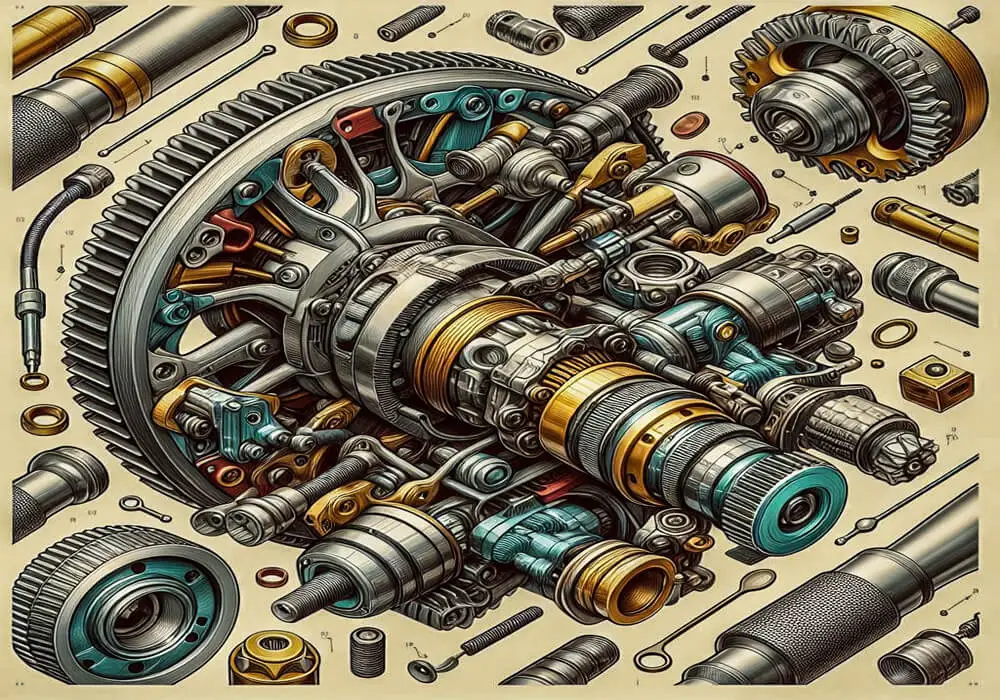How Do Go Kart Clutches Work?
Understanding how go kart clutches work is essential for both enthusiasts and professionals who want to optimize their go-karting experience.
This Guide provides a detailed look into the mechanism, types, and maintenance of go kart clutches, ensuring you have all the knowledge needed to keep your go-kart running smoothly.
What is a Go Kart Clutch?
A go kart clutch is a mechanical device that connects and disconnects the engine from the wheels.
Its primary function is to transfer power from the engine to the wheels, allowing the go-kart to move.
Unlike car clutches that use a pressure plate, go kart clutches commonly use centrifugal force to operate.
Types of Go Kart Clutches
1. Centrifugal Clutch
The centrifugal clutch is the most common type used in go-karts. It operates on the principle of centrifugal force.
As the engine speed increases, the centrifugal force causes the clutch shoes to expand and engage with the drum, transferring power to the wheels.
This type is ideal for beginner and recreational go-karting due to its simplicity and ease of use.
2. Manual Clutch
Manual clutches, though less common in go-karts, are similar to those found in motorcycles and cars.
They require the driver to manually engage and disengage the clutch using a lever.
These clutches provide more control and are often used in high-performance racing go-karts.
How Does a Centrifugal Clutch Work?

The Mechanism
A centrifugal clutch consists of a few key components: the clutch drum, clutch shoes, springs, and a flywheel.
The clutch shoes are connected to the engine via springs and are housed inside the clutch drum.
Engagement Process
- Idle State: At low RPMs, the springs keep the clutch shoes retracted, preventing contact with the drum.
- Acceleration: As the engine speed increases, centrifugal force pushes the clutch shoes outward against the resistance of the springs.
- Engagement: When the engine reaches a certain RPM, the shoes make contact with the drum, transferring power from the engine to the drivetrain, and propelling the go-kart forward.
Benefits of Centrifugal Clutches
1. Simplicity
Centrifugal clutches are simple to install and maintain, making them ideal for beginners and casual go-kart users.
2. Automatic Operation
They engage automatically based on engine speed, eliminating the need for manual operation and allowing the driver to focus on steering and speed control.
3. Durability
These clutches are robust and can handle significant wear and tear, which is advantageous for recreational go-karting.
Common Issues and Maintenance Tips
1. Overheating
Overheating can occur if the clutch is engaged for extended periods at low speeds. To prevent this, avoid prolonged idling and ensure proper airflow around the clutch.
2. Slippage
Slippage happens when the clutch shoes fail to fully engage the drum. This can be caused by worn-out shoes or weak springs. Regular inspection and replacement of worn parts can prevent this issue.
3. Cleaning
Dirt and debris can accumulate inside the clutch, leading to malfunction. Regular cleaning with a soft brush and appropriate solvents helps maintain optimal performance.
FAQs
How do I know if my go kart clutch is bad?
Signs of a bad clutch include slipping, overheating, unusual noises, and reduced acceleration. Regular inspection and maintenance can help identify and address these issues early.
Can I adjust the engagement speed of a centrifugal clutch?
Yes, the engagement speed can be adjusted by changing the springs to ones with different tension ratings. This allows customization of the clutch performance based on your specific needs.
How often should I replace my go kart clutch?
The frequency of replacement depends on usage and maintenance. Regular inspection and timely replacement of worn-out components can extend the life of the clutch. Typically, a well-maintained clutch can last several seasons of recreational use.
What is the difference between a centrifugal clutch and a torque converter?
A centrifugal clutch engages based on engine speed, while a torque converter uses fluid dynamics to provide variable power transfer, offering smoother acceleration and better performance under varying loads.
Conclusion
Understanding how go kart clutches work is crucial for maintaining and optimizing your go-kart’s performance. Centrifugal clutches, being the most common type, offer simplicity, durability, and ease of use, making them perfect for both beginners and seasoned go-kart enthusiasts. Regular maintenance and timely adjustments can ensure that your go-kart runs smoothly and efficiently, providing an enjoyable and thrilling racing experience.

